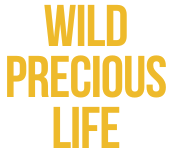22 Sep This Jungian Life Podcast: Selkie Folklore

In this wonderful podcast episode from This Jungian Life, the three analysts, Lisa Marciano, Deborah Stewart and Joseph Lee explore the story of the selkie, and the different lens and interpretations it might offer to help us better understand ourselves and our lives.
The selkie is a mystical creature from northern folklore, particularly prevalent in places like Iceland, Ireland, and Scotland. It possesses the ability to change from a seal to a human by shedding its skin.
The Story of the SELKIE
In the story discussed during the podcast, the selkie becomes human after losing her skin. While she is swimming with her selkie kin, a crofts man takes her skin and cajoles her into marrying him. As a human, she gets married and has children. Despite her life on land, she often gazes longingly at the sea, perhaps symbolising her inner conflict and the call of her true nature. One day, when her husband and older children are away, she goes on a search for her missing skin. Just as she’s about to give up, her youngest child reveals the location of the skin, which her husband had kept hidden.
Upon finding the skin, the selkie faces a profound dilemma: Should she return to the sea, embracing her true self, or stay on land with the family she has come to love? The narrative hints at the broader themes of identity, duty, and the conflict between one’s true nature and societal roles.
During the podcast, the hosts provide multiple interpretations of the selkie story:
Identity and True Self
The selkie’s transformation between seal and human form touches on themes of identity and the struggle to connect with one’s true self. The longing she feels for the sea, even while living on land, hints at a deep-seated desire to reconnect with her authentic nature.
Duty and Societal Expectations
By choosing to stay on land, the selkie embraces duty, motherhood, and societal expectations, even at the expense of her innate identity as a seal. This interpretation underscores the tension between personal desires and the roles that society imposes.
Loss of Magic and Enchantment
When the selkie’s skin is hidden, it represents the suppression of the magical or enchanted aspects of oneself. This can be seen as a metaphor for how societal roles and expectations can often lead individuals to suppress their unique qualities and passions.
Psychological Imprisonment
The act of the husband hiding the selkie’s skin can be seen as a form of psychological imprisonment or control. It touches on themes of freedom, autonomy, and personal agency.
The Role of Children
In this version of the story, it’s the youngest child who reveals the hidden skin, symbolizing hope, future potential, and perhaps the innate desire of the next generation to see authenticity and truth revealed.
Throughout their discussion, the hosts emphasise the richness and depth of the selkie myth, noting that its interpretations can be both personal and universal, varying based on individual perspectives and cultural contexts.
You can watch the full episode on YouTube:
Or listen on the This Jungian Life website or on Spotify etc.



No Comments